Table of contents
- What Is Paint Protection Film?
- The Science Of Paint Protection Film!
- What Kinds Of Paint Protection Films Are There?
- What Distinguishes PPF and Vinyl From One Another?
- How to install PPF Installation? can you apply it at home?
- What Is The Lifespan Of Paint Protection Film?
- The Advantages And Disadvantages Of Paint Protection Film
- Let’s Talk About Clear Bra
- Benefits of Applying Ceramic Coating on PPF
- Our Final Verdict On PPF
When it comes to protecting your vehicle from the elements, you have plenty of options. From waxes and sealants to ceramic coatings and paint protection films (PPF), you can choose from a wide range of products that offer varying levels of protection. One question many people ask is: can I apply ceramic coating over PPF? In this blog post, we’ll explore the benefits, drawbacks, and best practices of doing so.
Paint Protection Film has been gaining significant prominence recently. The thickest layer of defence is a polymer or polyurethane film that is incredibly strong despite being quite thin. In addition to keeping your vehicle’s clear coat safe against chemicals, UV rays, acid rain, and road debris, it can save you hundreds of dollars in autobody repair if the paint is damaged by road debris.
The internet is a wealth of knowledge regarding paint protection film. Some of it is true, while other parts are complete, grade A BS. If you look up the ceramic coating, you’ll find similar false information. Let’s investigate the reality behind paint protection film. Does it actually offer scratch protection? Can PPF really cure itself? In this article, we will dispel myths, rumours, and outright false information about paint protection films.
Buy Our PPF Ceramic Coating Here!
What Is Paint Protection Film?

It’s vital to understand paint protection film’s history to properly understand its potential. PPF, like many contemporary innovations, was created to address a specific issue. During the Vietnam War, the United States Department of Defense experienced issues with shrapnel, trees, and other debris damaging the rotor blades on several of their helicopters. The engineers at 3M were charged with developing a protective layer that was both thin and sturdy. The remedy was known as helicopter tape or a custom urethane film made for function rather than aesthetics.
The PPF of today is a far cry from the 3M helicopter tape. It is a translucent, colourable, and even custom-textured thermoplastic urethane that can be used to enhance glossy or matte paint jobs. It is a transparent paint protection film that can be bought in various grades and thicknesses and is applied by skilled experts with accuracy and precision. In fact, modern paint protection film offers several advantages, such as:
- Resistant to pollutants and acidic corrosion (like bug guts and bird droppings)
- Defends a painted surface against mineral deposits, acid rain, and gentle and hard water stains
- Reduces UV-induced oxidation of factory paint
- Impedes the impact of small rocks, gravel, tree branches, and other sharp items on painted surfaces.
- If a protective coating is scratched or hit, it will eventually heal.
- Lasts for up to 10+ years
The Science Of Paint Protection Film!
Let’s go technical now. The majority of vehicle paint protection films share a similar basic foundation. It is divided into four distinct layers:

- Clearcoat: Clear coat is a protective layer that is applied over the basecoat of paint on a vehicle. It is a clear resin-based coating that provides a layer of protection to the underlying paint and helps give the vehicle a glossy finish. It has a thickness of 0.5 mils (0.0132mm). All paint protection products are applying above the clear coat.
- Polyurethane: Polyurethane makes up the majority of PPF. This is 6.0 mils thick and gives the paint protection film strength and depth (0.152mm).
- Acrylic Adhesive: The acrylic adhesive is the layer below. It is slightly thinner, 1.6 mils thick (or 0.040mm). This provides the strength of the adhesion.
- Polyester Release Liner: The polyester release liner serves as the PPF’s base layer. It has a thickness of around 3.0 mils, or 0.076mm. The substance that creates the binding to the vehicle surface is exposed once removed.
What Kinds Of Paint Protection Films Are There?
There are three main types of paint protection film: self-healing, permanent, and optically clear. Self-healing films are the most popular type because they’re relatively easy to install, last for several years with proper care, and can repair themselves when exposed to heat or intense sunlight. Permanent films provide greater protection than self-healing films but require regular maintenance to keep them looking their best. Optically clear paint protection film is the most expensive option. It creates a barrier that is almost invisible and keeps contaminants from getting into your car’s paint and damaging it. This type of film also requires frequent cleaning to maintain its clarity and effectiveness. Depending on the size of your vehicle, you may need several rolls of film to cover the entire body. No matter which type you choose, be careful when installing and taking care of your paint protection film to make sure it works and lasts.
What Distinguishes PPF and Vinyl From One Another?
Another misunderstanding is the distinction between vinyl, commonly known as a vinyl wrap, and paint protection film, or PPF. PPF and vinyl are both popular options when it comes to protecting your vehicle’s paint job. While they may have similar applications, they differ in a few key ways. PPF is an optically clear film that is made of high-grade polyurethane and often used on cars as protection against chips, scratches and other environmental damage. It can be applied directly to the car’s paint, forming a protective layer. Vinyl, on the other hand, is a thicker material that can be used to customize your vehicle’s look and feel. It comes in many different colors, patterns, textures and finishes and can easily be removed when desired. Both PPF and vinyl offer great protection for your vehicle, but PPF is the better choice if you want to maintain the original look and feel of your car. It’s also much more durable than vinyl and will last longer in harsh conditions. Additionally, PPF can be reapplied in case it starts to wear off or gets damaged. Vinyl, however, cannot be easily repaired if it gets damaged. Ultimately, both PPF and vinyl offer great protection for your vehicle, but it’s important to know the differences between them in order to choose the best option for your needs. Here is a real-world illustration. The picture on the right side shows a car with an extremely amazing vinyl wrap. It is a branded vinyl applied over a particular vehicle’s factory paint. It resembles a “sticker” but it also shields the paint below from damage.
How to install PPF Installation? can you apply it at home?
Yes, it is possible to apply paint protection film (PPF) at home, but it can be a challenging and time-consuming process. If PPF is installed incorrectly, it will be visible even with just one small blemished area. The integrity of the film will also be compromised. Incorrect installation can even leave vulnerable areas of the vehicle exposed to hazards. Your best option is to have a certified installer do your installation work.
To apply paint protection film at home, you will need the following tools and materials:
- A roll of PPF
- A spray bottle filled with soapy water
- A squeegee or hard plastic card
- A sharp blade or knife
- A heat gun or hair dryer
Here are the steps to apply paint protection film at home:
- Clean the surface of the car thoroughly, making sure to remove any dirt, dust, or debris.
- Measure and cut the PPF to the desired size, using a sharp blade or knife.
- Spray the surface of the car with soapy water to help the film adhere to the surface.
- Peel the backing off the PPF and position it on the surface of the car.
- Use a squeegee or plastic card to smooth out the film and remove any air bubbles.
- Use a heat gun or hair dryer to soften and stretch the film, if necessary.
- Trim any excess film with a blade or knife.
Keep in mind that applying paint protection film requires a steady hand and a lot of patience. It can be difficult to get the film to lay flat and remove all the air bubbles, and it is important to work slowly and carefully to avoid making mistakes. If you are not confident in your ability to apply the film properly, it may be best to have it installed professionally. The success or failure of a PPF depends on proper preparation, installation, and aftercare, just like any other paint protection solution. Although each manufacturer’s installation procedure is distinct, the process generally involves the following steps:
Step 1 – Preparation for the Installation of Paint Protection Film
A PPF must be glued to a surface to provide protection. This is only made possible when that surface is spotless, damage-free, and debris-free. However, because a paint protection layer is transparent, the paint’s state or surface below significantly impacts how brilliant the final product will be. Along with this, also perform the below procedures before the application.
- A decontaminating car wash
- Paint correction
- Final Wipe Panel Wipe Down
Step 2 – Cutting The Material In Advance
There are two different ways to apply the PPF. A plotter or other device that pre-cuts the material into smaller, precisely sized parts, such as fender or door edges, is used by most professional PPF installers.
This saves money for the client and the installer, reduces waste, and, of course, conserves resources. Additionally, it is essential to speed up PPF installation and improve fit in narrow areas like door jambs, headlamps, and grilles.
The second technique employs bulk film. Basically, it’s utilised when an installer doesn’t have a plotter; nonetheless, it usually results in excess material being used, more time is required, and a less precise or accurate installation.
These issues can be reduced when employed by a skilled installer. Some are so outstanding that they can be manually cut to suit spoilers, side mirrors, the hood, deck lid, and rocker panels, among other things.
Step 3 – Fitting
The installer will pre-fit the automobile protection film to verify correctness. The market for paint protection film is flooded with numerous manufacturers and installation methods, such as a clear bra that simply covers the front of the car. The painstaking and precise technique of attaching the transparent bra to the painting ensures that the material will fit each piece and link or merge with one another with minimal gaps.
While this does extend the overall procedure’ duration a little, it will ultimately protect the paintwork and other portions of the car from rock chips and minor scratches, which can be quickly repaired with self-healing PPF.
Step 4 – Spraying The Fitting Solution
A fitting solution is an activator that enables the transparent bra or PPF to adhere to the surface. Spraying this substance over the painted surface and on top of the PPF activates the adhesive, which essentially functions as glue and binds firmly to the surface.
Once more, each brand of PPF has suggested properties for the appropriate solution, some of which can range from pure water to chemically-activated chemicals. This aids in its adhesion to a car’s paintwork, which helps to block UV radiation, oxidation, corrosion, and, eventually, the growth of rust.
Step 5 – The Final Fit and Application
The magic happens at this point. The skilled PPF installer will precisely fit the PPF by gliding it. It involves fitting, spraying, moving, squeezing bubbles, and other steps. The installer will use a squeegee to smooth down any wrinkles or bubbles in the PPF once it is in its precise position. The PPF clear bra offers great sealant or surface protection on the automobile’s exterior once it has bonded to the paint surface, especially against a scratch, bird dropping, or rock chip.
Step 6 – Drying
Drying is the last step in installing a transparent bra or PPF. There are several ways to do this, either by employing a particular drying method or over time. Most professional PPFs are heat-activated by being placed in a heat chamber or using a heat gun. A very tight fit is produced by restricting the material and, in essence, activating the “glue.”
What Is The Lifespan Of Paint Protection Film?
The lifespan of paint protection film (PPF) can vary depending on a number of factors, including the quality of the film, the type of maintenance it receives, and the conditions in which it is used. In general, high-quality PPF can last for several years with proper care.
Some manufacturers of PPF claim that their products can last for up to 10 years or more, while others may only offer a limited warranty of a few years. It’s worth noting that the lifespan of PPF can also be affected by factors such as the amount of sunlight and heat it is exposed to, as well as the frequency with which it is washed and waxed.
To get the most out of your PPF, it is important to follow the manufacturer’s recommendations for care and maintenance. This may include washing and waxing the film regularly to keep it clean and clear, and repairing any damage that may occur. If you notice any signs of wear or discoloration, it may be time to consider having the film replaced.
The Advantages And Disadvantages Of Paint Protection Film
We’re here to present facts, not smoke and mirrors. And it’s still true that not everyone should use paint protection film. Although it’s a terrific way to lessen scuffing, rock chips, and other surface damage, there are certain advantages and disadvantages to consider too.
Advantages Of Paint Protection Film
- Protection: The primary benefit of PPF is its ability to protect the paint on your vehicle from damage. It can help to prevent chips and scratches caused by road debris, as well as protect against fading and discoloration due to exposure to the sun and other elements.
- Durability: PPF is designed to be durable and long-lasting, and can help to preserve the appearance of your vehicle for many years. With proper care and maintenance, high-quality PPF can last for several years or more lasting up to 10 years or longer when paired with a high-quality PPF nano ceramic coating.
- Ease of maintenance: Because PPF is applied to the surface of the paint, it can help to keep the paint underneath looking newer for longer. This means that you may not need to wax or polish your vehicle as often, which can save you time and effort.
- Customization: PPF can be applied to specific areas of a vehicle, such as the hood, fenders, and bumper, allowing you to customize the level of protection to your needs. It can also be applied to non-traditional surfaces, such as the headlights or grille, to protect them from damage.
- Resale value: By protecting the paint on your vehicle, PPF can help to preserve the resale value of your car or truck. A well-maintained vehicle with a preserved paint job is often more attractive to potential buyers.
- Improved engineering and technology compared to earlier generations: no yellowing and increased hydrophobicity.
Disadvantages Of Paint Protection Film
There are a few potential disadvantages to using paint protection film (PPF) on your vehicle:
- Cost: PPF can be expensive, especially if you have a large vehicle or want to cover a significant portion of it. The cost of installation can also vary depending on the complexity of the job and the location of the shop.
- Maintenance: PPF requires regular maintenance to keep it looking its best. This includes washing and waxing the film to keep it clean and clear, as well as repairing any damage that may occur.
- Discolouration: Over time, PPF can become discolored or yellowed due to exposure to the sun and other elements. This can be especially noticeable on darker-colored vehicles, and can be difficult to remove.
- Limited coverage: PPF is typically only applied to certain areas of a vehicle, such as the hood, fenders, bumper, and mirrors. This means that other areas of the car, such as the doors and side panels, may still be vulnerable to chips and scratches.
It’s worth noting that these disadvantages are not unique to PPF and can also apply to other types of protective coatings or films. If you are considering using PPF on your vehicle, it’s important to weigh the potential benefits and drawbacks carefully before making a decision. PPF is expensive; there is no way to sugarcoat this. It represents a financial investment in the calibre and condition of your car. Working with a PPF-certified dealership or approved detailer is always recommended.
Let’s Talk About Clear Bra
A clear bra is a dedicated paint protection film that is applied to the front of a car, truck, SUV, or motorcycle. It is a technologically advanced polyurethane substance that adheres to metal, plastic, aluminium, Chrome, and even headlamp covers. It is put on the car’s front end, covering the front bumper, the paint, the grille, the headlights, the splitter, and even the front part of the hood and front fenders. The application’s location is referred to as the “bra.”
Back in the supposed good old days, it was typical for auto enthusiasts to cover the front of the car with leather or a durable vinyl-based material to achieve the same result: to protect the vehicle paint.
Benefits of Applying Ceramic Coating on PPF
There are several potential benefits to applying ceramic coating on top of paint protection film (PPF):
- Increased Depth and Shine: When a nano-ceramic coating dries, it becomes a thin layer of glass that is just as robust as quartz, increasing depth and shine. This enhances the paint’s brilliance beneath the PPF, increasing the depth of the paint below, whether it has a gloss or matte finish.
- Enhances Hydrophobic Properties: “hydrophobic” refers to a surface’s capacity to repel water. In addition to creating optically cool water shedding and beading, it also lessens the likelihood that dust, pollen, and other impurities will stick. If you hate pigeons, for instance, and one of them leaves a deuce on your car, a ceramic-coated PPF makes it easy to clean up the mess.
- Increased Lifespan: By applying ceramic coating on top of paint protection film, the coating becomes more durable and resilient while retaining the PPF’s ability to heal itself.
- Easy maintenance: Ceramic coatings are known for their ability to repel water and dirt, which can make them easier to maintain than traditional waxes or sealants. When applied on top of PPF, a ceramic coating can help to keep the film looking clean and clear, even after regular washing and drying.
Also Read: Can You Apply CERAMIC COATING OVER PAINT PROTECTION FILM?
Our Final Verdict On PPF
On the market, there are as many different types of paint protection film as there are grades of car wax, ceramic coatings, and paint sealants. Consider the following if you’re thinking about investing in a top-notch PPF.
Complete due diligence: Before making any significant purchases, ensure you’ve researched the item you’re considering. This is especially true for individuals who apply paint protective film.
Does the PPF Deliver What It Promises: As a sector, the PPF is less subject to tricks and marketing buzzwords. To make sure PPF performs as the manufacturer says, it’s crucial to confirm through third-party reviews and research into the technology employed in it.
Instant Healing PPF: The capacity of paint protection film to repair itself after minor damage or scratches is arguably its strongest feature. Make sure your PPF is an instant healing one. If you have to take your vehicle to the installer every time you get a small scratch, this will increase your overall expense and add time.
In conclusion, paint protection film is an excellent way to protect your vehicle’s paint from dirt, debris, and scratches. With the right PPF and ceramic coating combination, you can create a barrier that will give your car a showroom-like shine for years to come. Before investing in any type of paint protection film, be sure to do your due diligence to make sure you get the best product for your money. With the right PPF and ceramic coating, you can rest assured that your vehicle’s paint will remain in pristine condition. The added bonus of ceramic coating on top of PPF gives your car an even greater level of protection, enhancing its hydrophobic properties and increasing its lifespan.



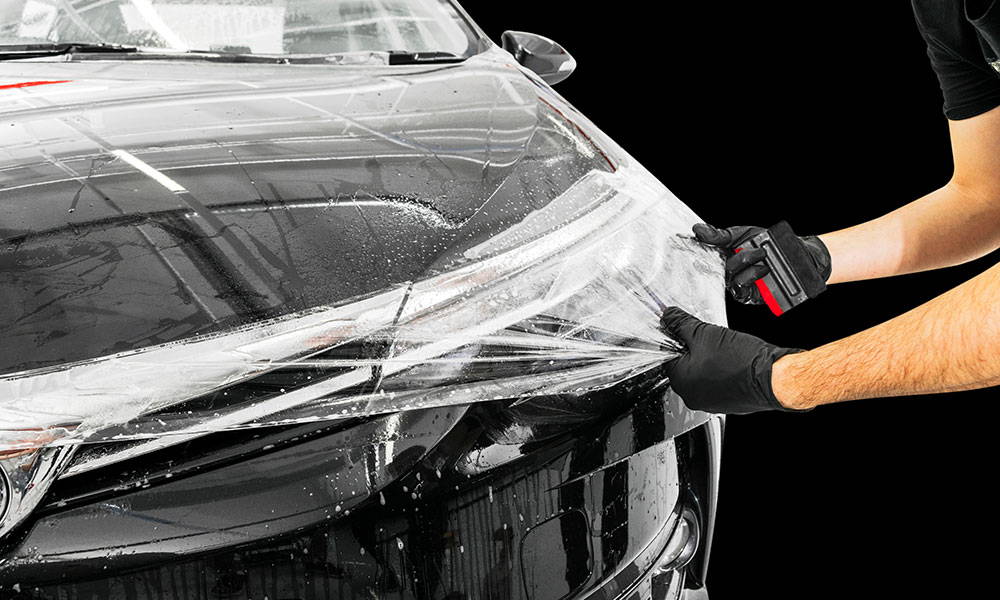
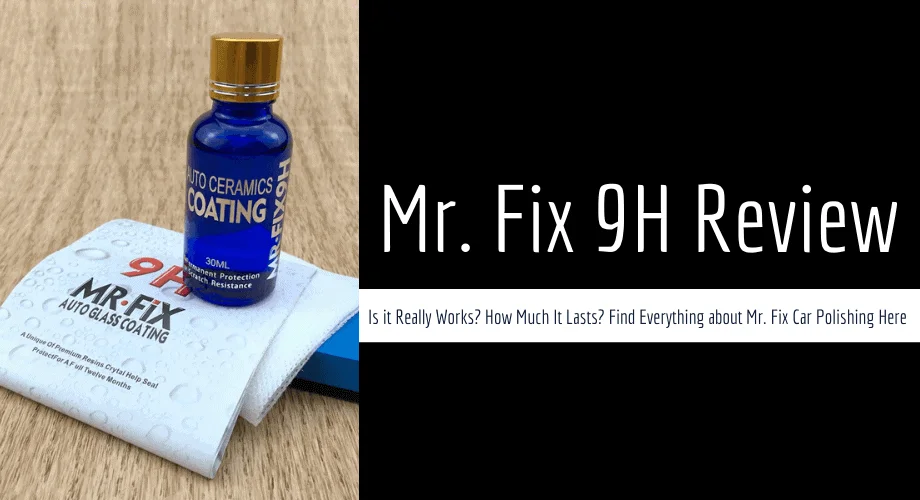
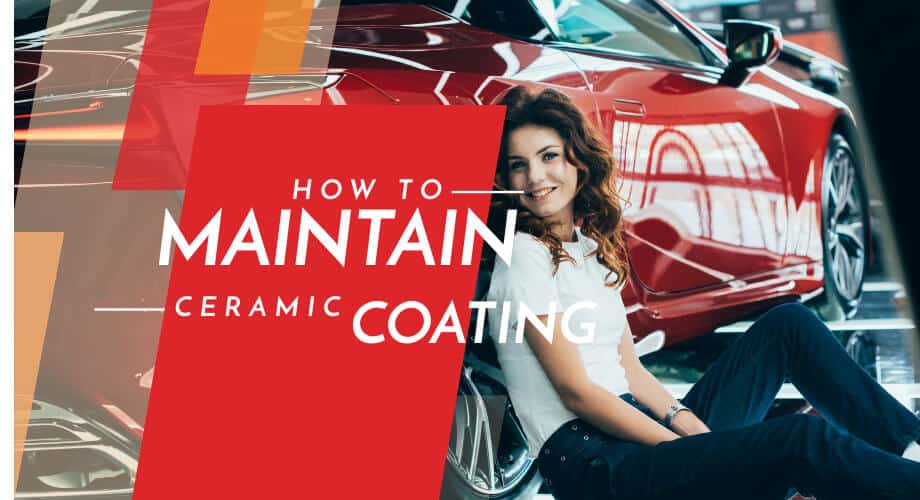
I recently got a new paint job for the car my dad handed down to me recently after I got my license, so now I’m considering adding a protective coating over it soon. I appreciate you letting us know that PPF is a clear film made of high-grade polyurethane that people use on cars to protect them against chips, scratches, and other environmental damage. I’ll take note of this while I look for an auto body shop nearby where I can get PPF installed on my car soon. https://gtautostyling.com/ppf/